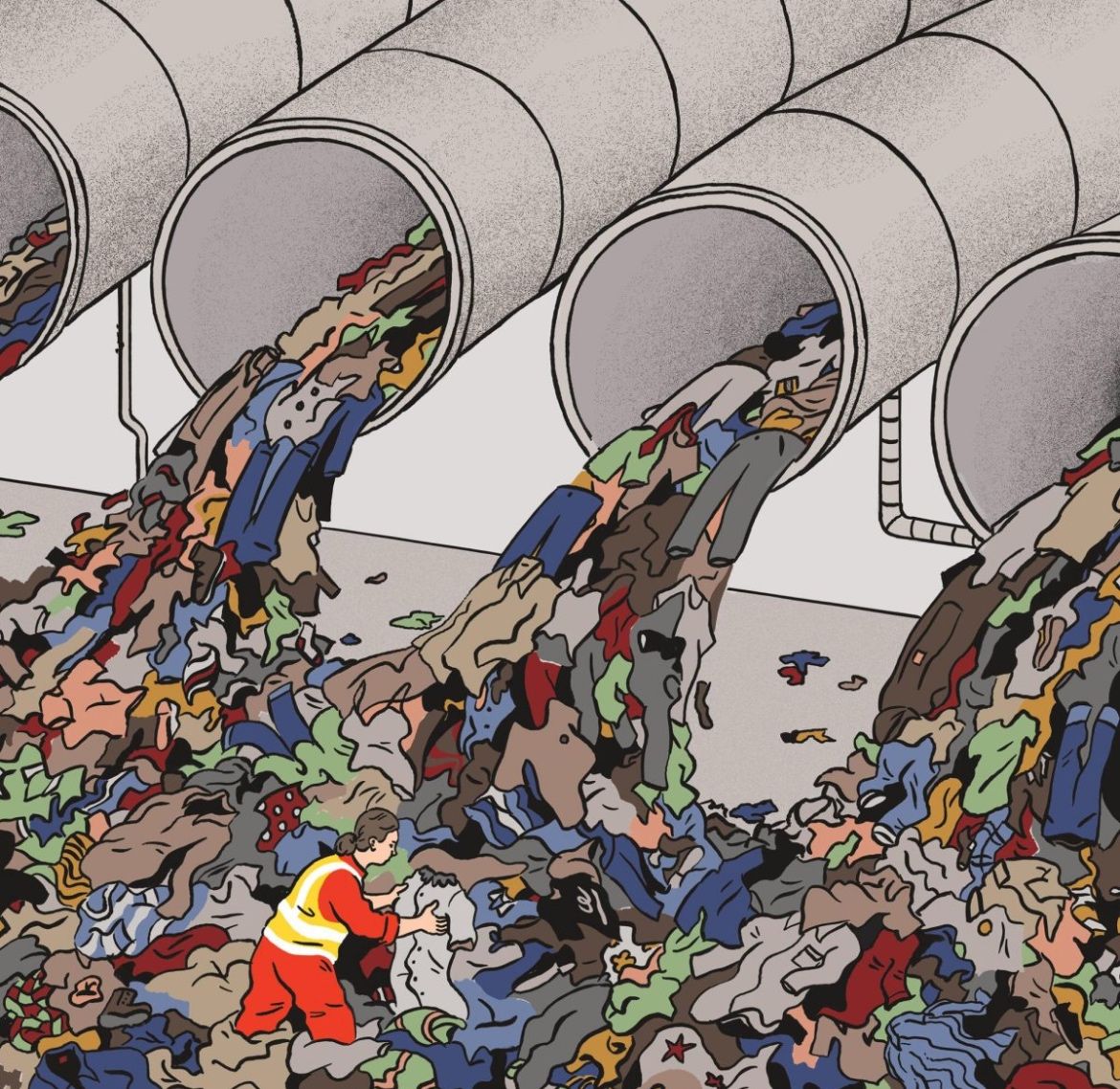Fast fashion is starting to look a lot like tobacco—highly addictive, hugely profitable, and finally drawing serious attention from regulators. For years the industry has churned out cheap, disposable clothes at a breakneck pace, fueling enormous overproduction. Most of these clothes end up in landfill or are illegally exported under the guise of “reuse.”
The waste sector has long warned that sorting, collecting, or recycling alone won’t solve this flood of $5 T-shirts.
In Europe, the environmental toll is stark:
- Textile consumption carries the fourth-largest environmental burden, after food, housing, and transport.
- Less than 1% of textile materials are recycled into new clothes.
- Each year, 700,000 tonnes of used textiles are exported, often mislabeled, dodging disposal regulations.
The EU is finally stepping up with concrete actions:
- By 2025, Extended Producer Responsibility will force brands to cover the costs of collection and treatment.
- Tougher rules under the EU Waste Framework Directive will clamp down on falsely labelled exports.
- Eco-design Regulations will impose new standards on clothing design and durability.
- A Digital Product Passport will provide transparency by tracking products throughout their lifecycle.
These measures are critical, but there’s a bigger issue. If producers keep pumping out garments designed to be worn just seven times before disposal, no collection or recycling system can keep up with the growing waste tsunami.
Fast fashion is a $150 billion industry fueling 10% of global carbon emissions—more than all international flights and maritime shipping combined—while consuming immense water and energy resources. It generates millions of tonnes of textile waste globally, most of which ends up in landfills, damaging ecosystems and communities. The pollution includes microfibers released into oceans and untreated wastewater contaminating rivers in developing countries where production is concentrated.
Yes, improving collection, sorting infrastructure, and chemical recycling trials is crucial. But the conversation needs to shift first toward reining in ultra-fast fashion itself. Policymakers and voters must recognize that this business model is dangerous and socially destructive. Like tobacco before it, fast fashion demands strict control to halt its environmental and social damage before it’s too late. The current approach treats symptoms, not the cause. The time for serious reform has arrived.
